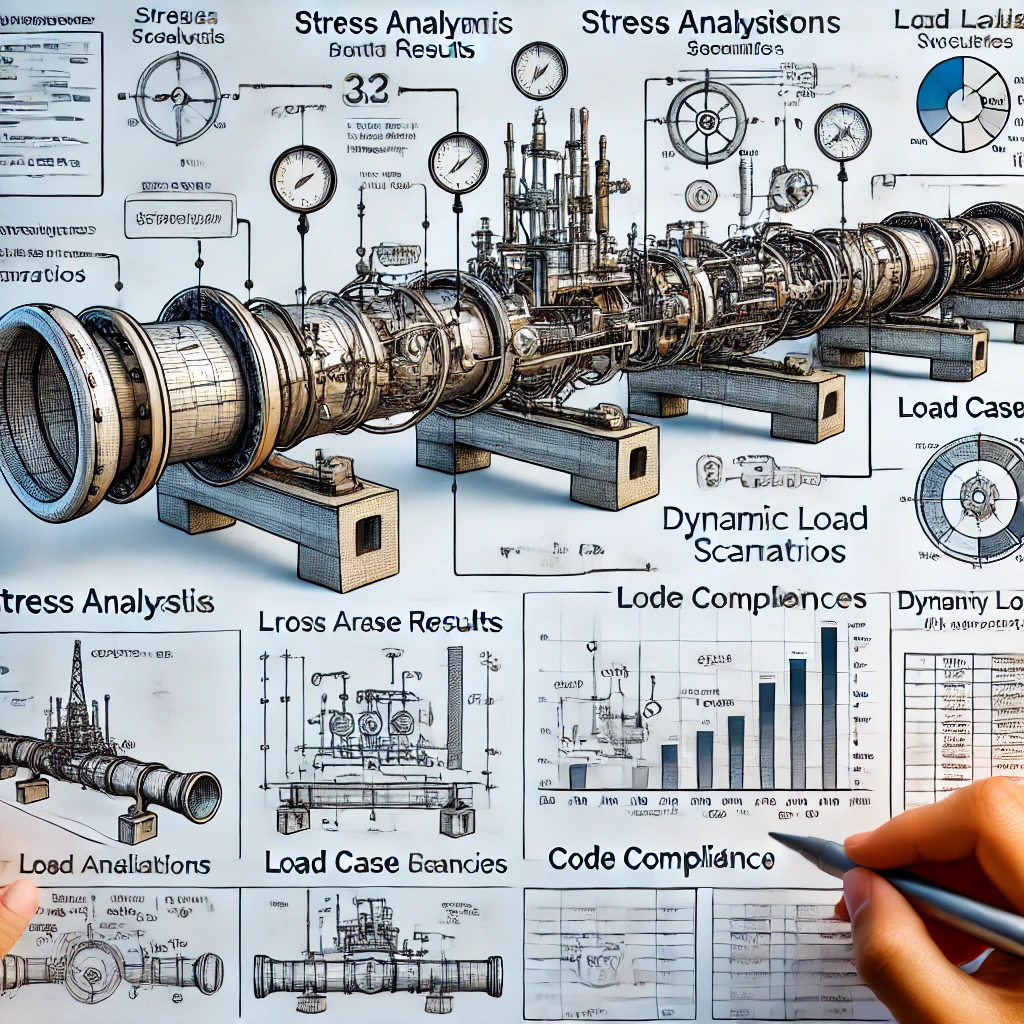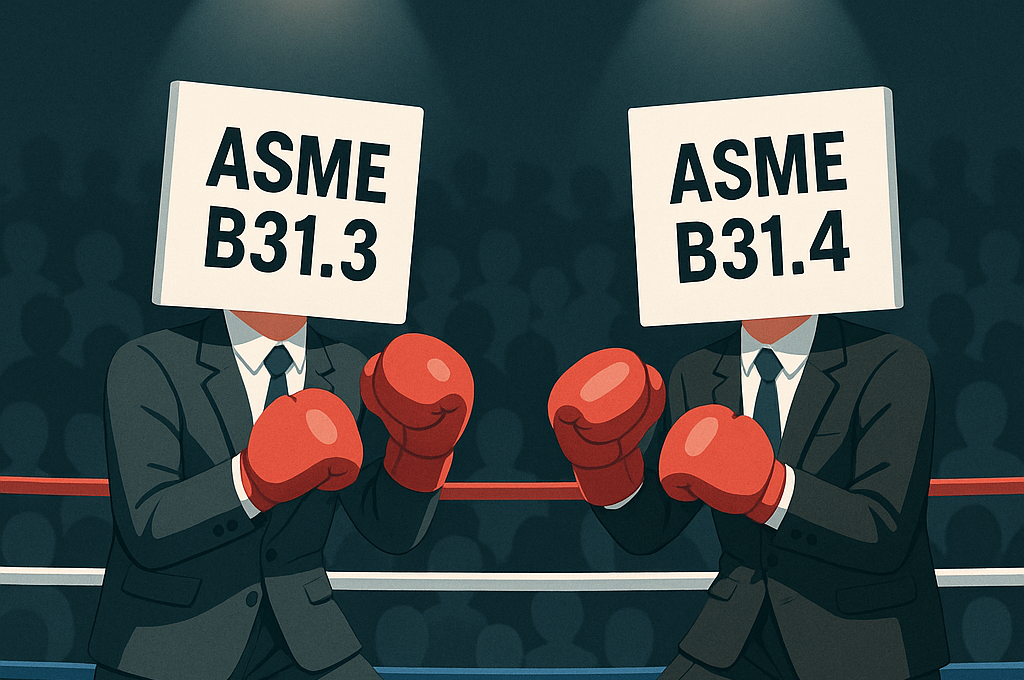Introduction to CAESAR II
CAESAR II is a widely recognized software used for the analysis of piping systems in engineering projects, particularly within the oil and gas, chemical, and energy industries. Developed by Hexagon PPM, this powerful tool is designed to handle the complexities of pipeline design, allowing engineers to evaluate the structural integrity, flexibility, and compliance of pipelines with industry codes and standards. The software is invaluable for ensuring that pipeline systems can withstand various operational loads, environmental conditions, and potential hazards.
Key Features of CAESAR II
CAESAR II offers several features that make it an essential tool for pipeline engineers:
- Stress Analysis: The primary function of CAESAR II is to perform stress analysis on piping systems. It calculates stresses induced by thermal expansion, pressure, weight, and external loads, ensuring that the pipeline operates within safe limits.
- Dynamic Analysis: CAESAR II can conduct dynamic analysis to evaluate the response of pipelines to transient loads such as water hammer, seismic events, or equipment vibrations. This helps in designing systems that can endure these dynamic forces without failure.
- Code Compliance: The software supports compliance with numerous international codes and standards, including ASME B31.3, B31.4, B31.8, and many others. It checks whether the pipeline design meets these standards, ensuring safety and regulatory compliance.
- Load Case Management: CAESAR II allows engineers to define and manage multiple load cases, such as operating, sustained, occasional, and expansion cases. This feature is crucial for assessing the performance of the pipeline under various conditions.
- Flexibility Analysis: The software provides tools to assess the flexibility of piping systems, ensuring that the pipelines can accommodate thermal expansion and contraction without inducing excessive stress or strain.
- Integration with Other Tools: CAESAR II can be integrated with other design and analysis tools, such as CAD software, to streamline the design process and improve accuracy. This integration is beneficial for complex projects involving multiple disciplines.
Applications of CAESAR II in Pipeline Engineering
CAESAR II is used extensively in pipeline engineering for a variety of purposes. Below are some key applications:
1. Pipeline Design and Optimization
One of the primary uses of CAESAR II is in the design and optimization of pipeline systems. Engineers use the software to model the pipeline’s layout, assess different routing options, and optimize the design for cost, safety, and performance. The software helps identify the best locations for supports, anchors, and expansion loops, ensuring that the pipeline can accommodate thermal movements and other operational loads.
2. Stress Analysis for Safety and Compliance
Stress analysis is a critical component of pipeline design, particularly in industries where pipelines transport hazardous materials. CAESAR II allows engineers to perform detailed stress analyses to ensure that the pipeline can safely handle the pressures, temperatures, and forces it will encounter during operation. By simulating different operating conditions, engineers can identify potential failure points and make necessary design adjustments to prevent accidents.
3. Seismic and Dynamic Load Analysis
In regions prone to seismic activity, pipelines must be designed to withstand earthquakes and other dynamic forces. CAESAR II’s dynamic analysis capabilities allow engineers to simulate seismic events and assess the pipeline’s response. This analysis is crucial for designing pipelines that can maintain integrity during and after an earthquake, minimizing the risk of leaks or ruptures.
Additionally, the software can analyze the effects of dynamic loads caused by equipment vibrations or transient phenomena like water hammer. This capability is essential for designing pipelines that can withstand the stresses imposed by such events without sustaining damage.
4. Thermal Expansion and Flexibility Analysis
Pipelines exposed to varying temperatures experience thermal expansion and contraction, which can induce significant stresses if not properly managed. CAESAR II enables engineers to analyze the effects of thermal expansion and ensure that the pipeline has sufficient flexibility to accommodate these movements. This analysis helps in the design of expansion loops, flexible joints, and other components that mitigate the effects of thermal stress.
5. Code Compliance and Documentation
Compliance with industry codes and standards is mandatory for any pipeline project. CAESAR II simplifies this process by automatically checking the pipeline design against relevant codes, such as ASME B31.3 for process piping or B31.8 for gas transmission. The software generates detailed reports that document the compliance of the design, which can be submitted to regulatory authorities for approval.
6. Fatigue and Life Cycle Analysis
Pipelines subjected to cyclic loading may experience fatigue over time, leading to the initiation and propagation of cracks. CAESAR II allows engineers to perform fatigue analysis by simulating the cyclic loads and assessing the pipeline’s life expectancy. This analysis is critical for identifying areas at risk of fatigue failure and implementing design changes to extend the pipeline’s operational life.
Advanced Capabilities of CAESAR II
In addition to its core functions, CAESAR II offers advanced capabilities that further enhance its utility in pipeline engineering:
- Material Database: The software includes an extensive material database, allowing engineers to select appropriate materials for the pipeline based on the operating conditions. The database includes material properties such as yield strength, thermal expansion coefficients, and allowable stress limits.
- Non-Linear Analysis: CAESAR II can perform non-linear analysis to account for complex behaviors such as pipe support friction, gap closure, and soil-pipe interaction. This capability is essential for accurately predicting the pipeline’s response under real-world conditions.
- Load Sequencing: The software supports load sequencing, which allows engineers to simulate the order in which loads are applied to the pipeline. This feature is particularly useful for analyzing the effects of start-up, shutdown, and operational sequences on the pipeline’s integrity.
- User-Defined Load Cases: Engineers can create custom load cases to simulate unique operating scenarios. This flexibility is important for projects with specific requirements that may not be covered by standard load cases.
Conclusion
CAESAR II is an indispensable tool in pipeline engineering, providing engineers with the capabilities needed to design, analyze, and optimize piping systems for safety, compliance, and efficiency. Its extensive features, from stress and dynamic analysis to code compliance and material selection, make it a comprehensive solution for handling the complexities of pipeline projects. Whether dealing with thermal expansion, seismic loads, or fatigue analysis, CAESAR II equips engineers with the tools necessary to ensure that pipelines are designed to meet the highest standards of safety and performance. As the demands on pipeline infrastructure continue to grow, the role of CAESAR II in pipeline engineering will only become more critical, ensuring that pipelines remain safe, reliable, and resilient in the face of increasingly challenging conditions.





